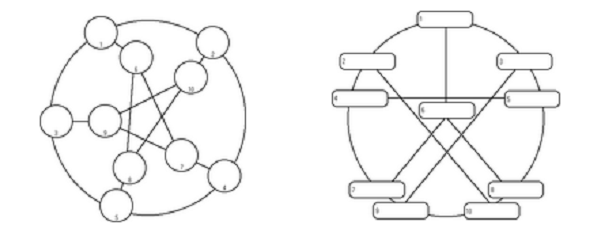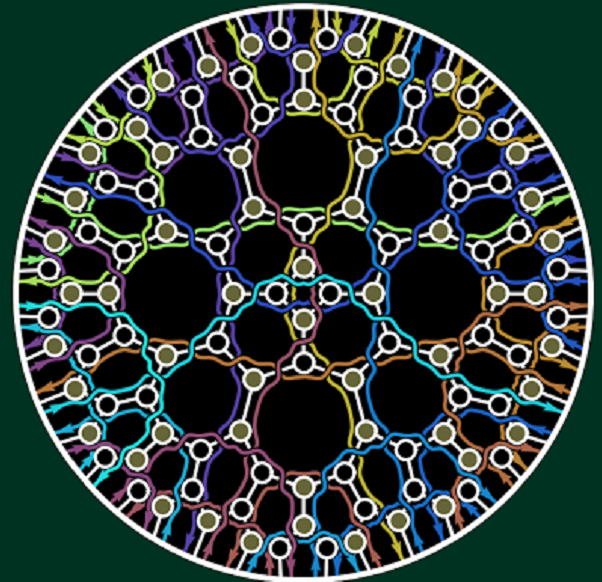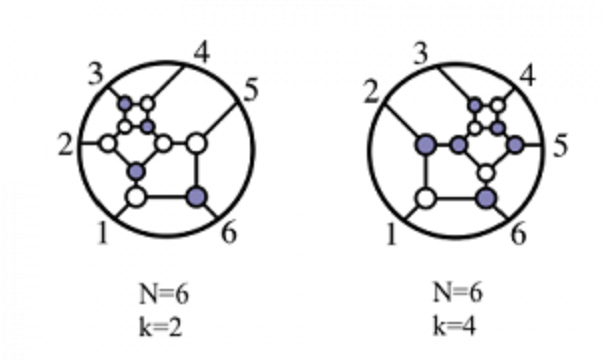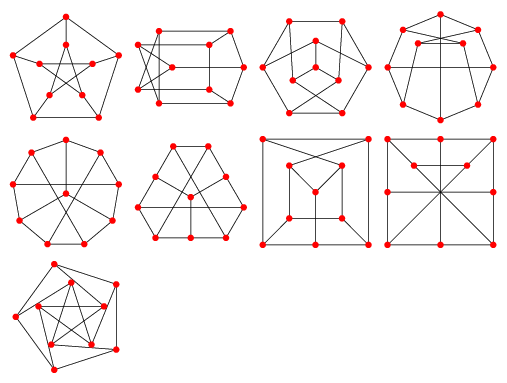[ by Charles Cameron — cross-posted from Sembl ]
Following up on two previous posts on graph-based design: Preliminaries and Two dazzlers
**
Here are two old HipBone boards that have the curious property of looking very different while being, in fact, topologically identical. Moves played on either board will feature the same set of links — although, given the visual impac ts of proximity and distance, they may “feel” very different to the players themselves:

I call them the Pentagram and Mercedes boards, for what I trust are obvious reasons. They are both based on versions of the Petersen graph, and I’m grateful to Walter Logeman and Miles Thompson for introducing me to them.
**
One of the vivid differences between my childhood memories and present experience has to do woth the time when the table, the place where food or whatever was, was above my head.
Of course, the table was flat — but it was flat above my head, and I had to reach up into that unknown flatland to grab what I could. Unless of course there was a tablecloth trailing over the edge of the flat, down towards eye-level, in which case.. voila!
Hence my ongoing notion that something tasty might be literally above my head, and my associated excitement. Hence, too, my excitement at the prospect that tasty ideas might also be above my head, and that I might reach up into unknown intellectual flatlands — or pull them down to my own level with a tug of the intellectual tablecloth.
**
That may sound foolish, but it’s entirely in line with Eric Drexler’s advice — and Drexler published the first scientific paper on molecular nanotechnology [.pdf] in 1981.
Here’s what Drexler has to say about reading scientific journals:
Read and skim journals and textbooks that (at the moment) you only half understand. Include Science and Nature.
Don’t avoid a subject because it seems beyond you – instead, read other half-understandable journals and textbooks to absorb more vocabulary, perspective, and context, then circle back.
**
Okay, I’m in over my head as they say.
Here’s an artist’s rendering of something called, I guess, an amplituhedron, a (relatively) newly discovered mathematical object that has the world of physics all excited:

Here’s another, titled for some reason “droplet”:

Neither of those is anything I could conceivably use to come up with a HipBone or Sembl board, is it?
But get this:

This is another way of looking at the same corner of mathematical physics — one of over a hundred diagrams in the same paper— and here are the two “lesser” diagrams that caught my attention and made me think back to the Petersen graph boards earlier on today:

Now my itch is to figure out what use the “filled” and “open” nodes in these two graphs might serve in game-playing terms, and how on earth to interpret in game terms the complex weavings of the colored lines in the larger image / board.
**
And hey, while we’re at it, Here are the Wolfram variants on the Petersen graph — striking, aren’t they?

Food for thought is food for play.
**
Sources:
N. Arkani-Hameda et al, Scattering Amplitudes and the Positive Grassmannian
Nima Arkani-Hameda and Jaroslav Trnkab, The Amplituhedron
Check out the stunning physics — deeper than time and space? — if you don’t already know it, and explain it if you do!
Natalie Wolchover, A Jewel at the Heart of Quantum Physics
And for Wolfram on the Petersen Graph:
Eric W. Weisstein, Petersen Graph














